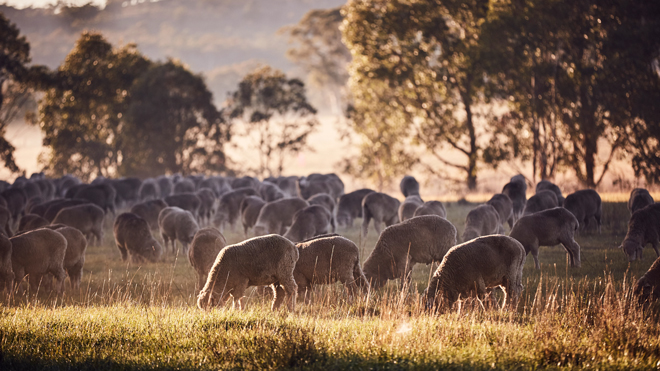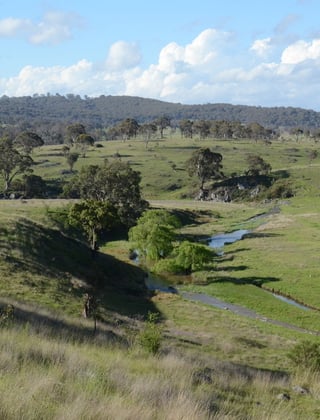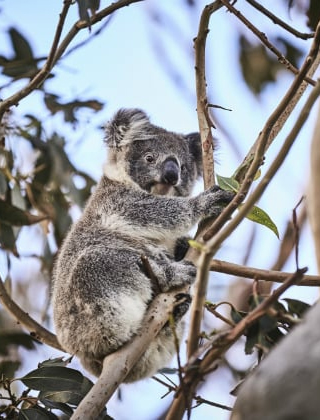Metrics for Nature Positive Farming

Through consultation with woolgrowers and the supply chain, AWI is building industry-wide consensus on the most commercially appropriate metrics for woolgrowers to measure, manage and report their on-farm natural capital and environmental performance.
With markets becoming heavily focused on environmental sustainability, the global textile and apparel industry is increasingly interested in sourcing products made from fibre that is produced in a ‘regenerative’ or ‘nature positive’ way. However, these terms mean different things to different people.
What is clear though is that demand for this fibre is outstripping supply. Only about one in every ten bales of Australian wool is currently certified as sustainably produced, despite positive environmental practices being widespread on Australian wool-growing properties.
Buyers and brands want significantly more woolgrowers to engage with on-farm environmental certification schemes. For this to happen at scale, (1) more woolgrowers must be able to measure and demonstrate their positive environmental performance, (2) labelling and terminology must resonate with the whole supply chain, from woolgrowers through to consumers, and (3) assessment must be cost-effectively provided to woolgrowers, minimising barriers to adoption.
AWI has responded to these challenges through a project called Natural capital and environmental performance measures for Australian woolgrowers. The AWI-funded project was conducted by Farming for the Future, a not-for-profit research initiative exploring the relationship between natural capital and farm business performance (www.farmingforthefuture.org.au), in collaboration with the Research Centre for Future Landscapes at La Trobe University.
Although there is further work still to do, the project has been positively embraced by all the wool industry stakeholders involved, including woolgrowers, certification organisations, brokers/buyers and brands. They acknowledge the industry-wide benefits of the project, which include:
- Australian woolgrowers and supply chains collaborating to measure, manage and report on their environmental performance.
- Standardised, science-based commercially appropriate metrics of on-farm performance.
- Industry consensus on the definition of sustainable farming, thereby providing clarity for supply chains and markets.
“Using metrics has an educational benefit because it can provide farmers with new knowledge about their farms. We can see improvements, which is encouraging and satisfying. Having data on metrics means you can use this information to guide management decisions.”
Woolgrower
Measuring environmental performance
Although sustainable natural resource management practices are routine, wool growers need to be able to back up claims of positive environmental performance with credible evidence. AWI is working to make this easier, by enabling robust objective evidence to be cost-effectively provided.
Currently, inconsistency in farm-scale measures drives up the cost and complexity of measurement, and therefore limits woolgrowers’ ability to supply sustainably-certified wool. Also challenging is aligning the measurement and reporting with international accounting frameworks for carbon and nature, as well as market requirements, for example EU greenwashing regulations, and the Science Based Targets initiative (SBTi, www.sciencebasedtargets.org).
The wool industry must drive the agenda. A continued focus on carbon alone would be detrimental to wool because the broader environmental and social benefits of wool, and the wool industry, would be ignored.
A key result of the project was defining a core set of fundamental, scientifically-based, environmental measures, which include soil and pasture condition, biodiversity, waterway health, as well as carbon – see the box below. These measures have been shortlisted from those developed and tested on-farm during past Farming for the Future and La Trobe University projects. All metrics with an asterisk (*) would be remotely assessed using satellite imagery, reducing the cost of assessment.
The core metrics agreed through consultation
- Water use efficiency (water used in production)
- Net greenhouse gas balance (emissions minus woody sequestration)
- Carbon sequestration* (carbon stored on farm)
- Soil condition* (ground cover used as a proxy for soil condition)
- Forage condition (condition and quality of pastures)
- Aquatic condition* (extent to which riparian and wetland areas are vegetated)
- Tree cover* (extent of canopy cover)
- Ecological condition* (proxy for habitat)
- Tree aggregation* (distribution of woody vegetation: native and exotic)
- Shade* (shade provided by trees to production areas)
- Shelter* (shelter from wind, provided by trees, to production areas)
- Biodiversity management index (degree to which a farm is managed in a biodiversity positive way)
These measures are outcome-focused, able to report trends over time; rigorous; practical and cost-effective to measure; and useful for on-farm decision-making.
Whilst there was good compatibility between these core measures and those already adopted by certification schemes, a key difference was most certification scheme measures were practice-based, whereas the proposed metrics are outcome-based. For example, a grower declaration of sufficient shade and shelter for livestock vs objectively measuring this via remote sensing. Outcome-based measures provide greater rigour in supporting the needs of brands and providing woolgrowers with useful farm management data.
Establishing baseline measures for individual farms is a critical first step to identifying and reporting trends over time.
These measures were agreed through consultation with industry stakeholders, including woolgrowers.
Definition of ‘Nature Positive Farming’
Definitions are important to ensure the whole supply chain is talking about the same environmental outcomes on-farm. It’s especially important to be communicating to markets (brands and consumers) in language they understand.
“Brands ask for ‘regenerative’ but they don’t know what that means…a definition is very important and would allow us to tell them exactly what we are providing them.”
Leading wool broker
The project explored definitions for ‘regenerative’ and ‘nature positive’, and industry stakeholders provided valuable insights and perspectives.
There is not yet a simple solution to labelling positive on-farm environmental management that resonates all along the supply chain.
Whilst ‘regenerative’ resonates strongly with the demand-end of the supply chain (and has high market penetration), it can be a vexed term for the supply side (woolgrowers).
‘Nature positive’ has an agreed global-scale definition, in the Kunming-Montreal Global Biodiversity Framework.
The project has therefore merged the definitions for regenerative and nature positive to create the ‘Woolmark Nature Positive Farming’ specification.
HEADLINE DEFINITION:
Nature Positive Farming leaves the land in a better condition for the next generation, enhancing regeneration, biodiversity and supporting livelihoods and animals.
FOUNDATION DEFINITION:
Nature Positive Farming leverages natural capital and ecosystem services to produce wool in a way that measurably improves the extent and/or condition of soil, water, carbon, native species and habitats and reduces threats to biodiversity, at the farm-scale relative to a baseline. Nature Positive Farming can support long term resilience, productivity, animal wellbeing, sustainable livelihoods, whilst minimising waste and chemical and/or non-renewable energy inputs.
“This is a great opportunity to create a reward system for wool and the environment, and inspire change. There are global and grower benefits. Industry needs a responsible emissions reduction pathway, and using measures, growers can demonstrate awareness in their decision making and journey.”
Woolgrower
“Our job is to deliver value to growers and help them to tell (and sell) their story and the story of their wool. Having consistency in outcomes-based metrics will help us do this.”
Certification body
Click here to read a case study of a woolgrower participant involved in the consultation
This article appeared in the September 2024 edition of AWI’s Beyond the Bale magazine. Reproduction of the article is encouraged.















